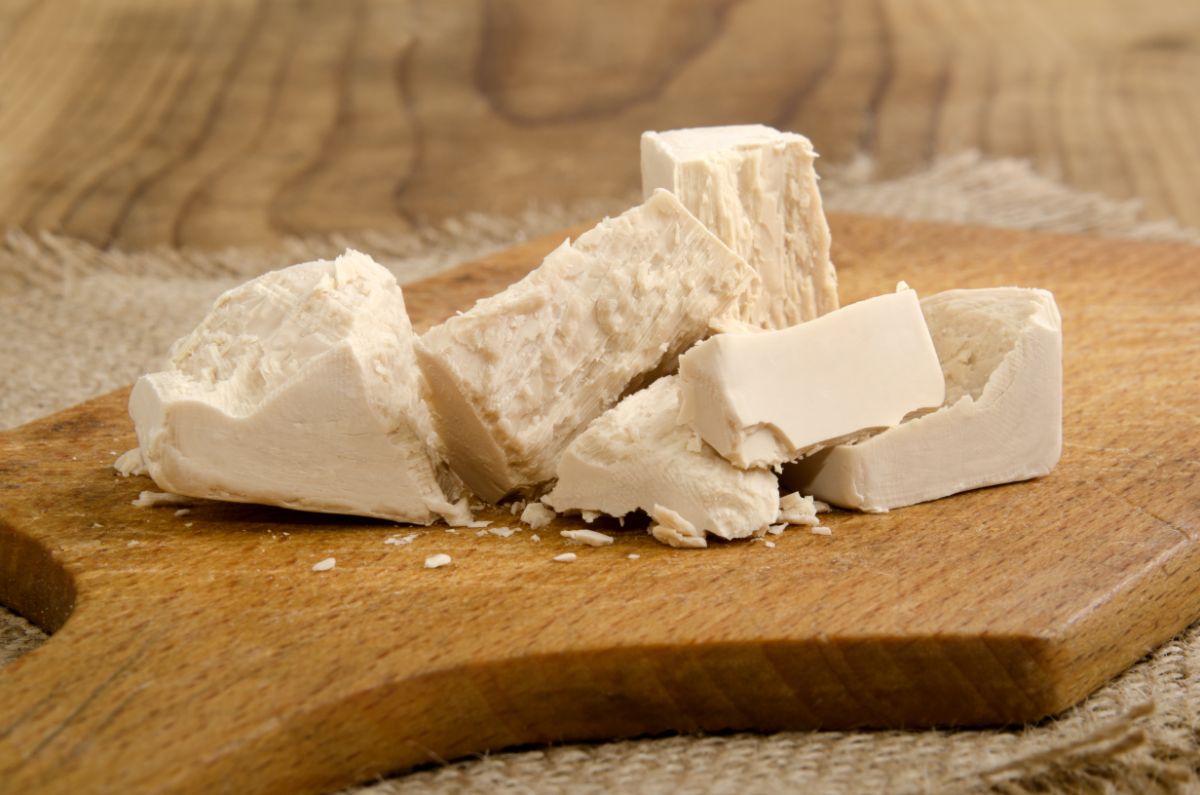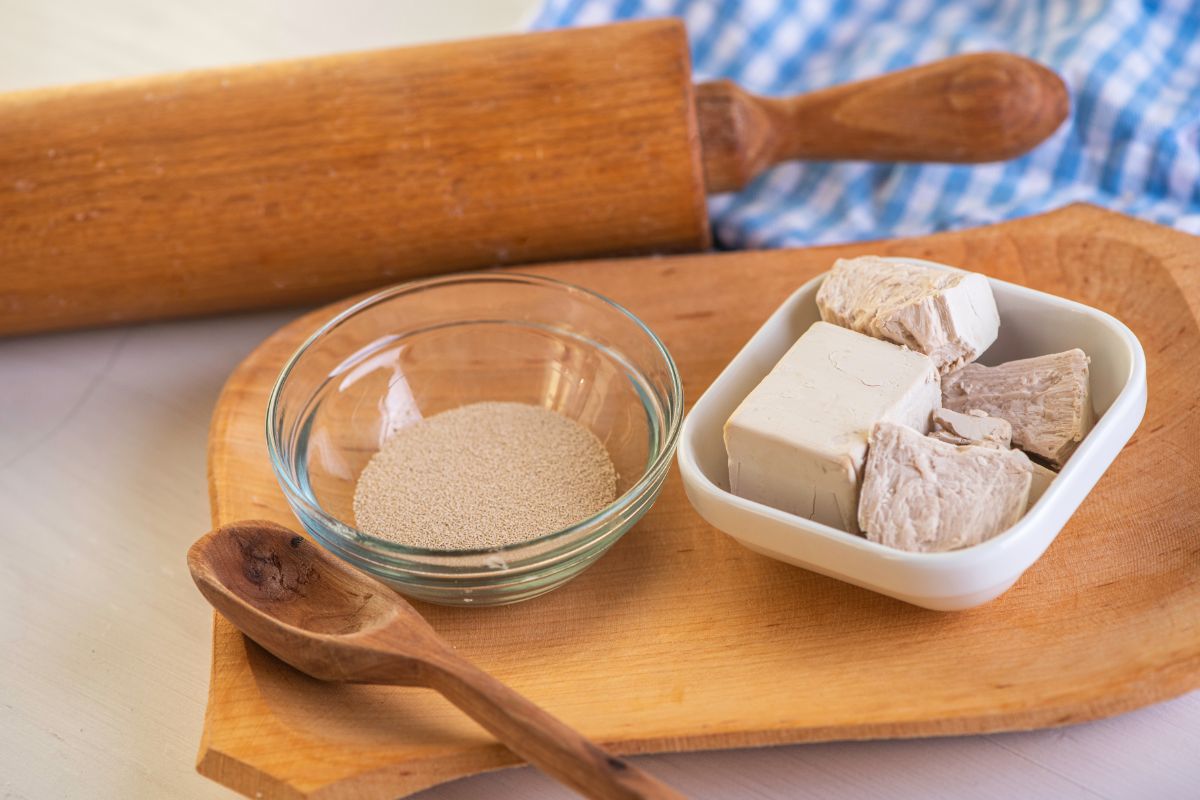When you combine yeast with flour, sugar, and water, it creates crusty, airy bread. If you get disappointing results, you can add more yeast to the recipe. However, this may alter the taste and texture. Yeast helps in the formation of gluten, which allows the bread to rise. The amount of yeast you add will determine how vigorously you want the process to take place.

So, is too much yeast in bread bad for you? Most bread yeasts are healthy for humans so they are not bad for you. They help to treat many health ailments. A growing body of evidence suggests that yeast can help to eliminate fatigue, increases vitality, and cures several ailments.
Baker’s yeast is used to make bread and is very nutritious. One tbsp. of dried yeast contains 3 grams of protein, 23 calories, B vitamins, phosphorous, and large amounts of iron.
*This article may contain affiliate links. As an Amazon Associate, I earn from qualifying purchases. Please take that into account.
- Dutch oven
- Large mixing bowl
- Measuring cups and spoons
- Bread thermometer (fancy or a budget one)
- Scoring lame
Extra (nice to have):
- Kitchen scale
- Dough scraper and bowl scraper (yes, they are different)
- Cooling rack
- Baking stone (you don’t need a dutch oven if you use this)
👉Learn how to make bread and pizza with this awesome book.
But a lot can happen when you add too much yeast to bread. When it produces too much gluten, the dough may collapse. This can be likened to a balloon that bursts due to much air.
Another problem with too much yeast is that it can interfere with taste. Sometimes, the flavor can be too strong than you’d like. Slower rises give the bread a delicious flavor.
Yeast can make the dough go flat even before the flour is ready to expand. If you allow the dough to rise for too long, it will have a light crust. This is because gluten cannot stretch any further.
Health problems when you consume too much yeast
Most bakers use active dry yeast in their recipes. When you consume too much, it begins to break down sugars in the stomach causing an uncomfortable experience. This results in pain in the abdominal region.
Some yeast species can produce mycotoxins which if harmful to humans if ingested. This is why people with candidiasis are cautioned against yeast products.
Too much yeast can also suppress the immune system causing disorders such as premenstrual syndrome, rheumatoid arthritis, hyperactivity, depression, multiple sclerosis, and depression.
Is too much active dried yeast bad for you?
When you eat too much active dry yeast, it begins to break down sugars in the stomach leading to an uncomfortable experience. In addition to that, it can cause facial flushing due to high niacin and fiber content.
High yeast means more gluten in the stomach. When the digestive system is clogged with gluten, it’s less effective in protecting the body against disease-causing organisms.
Is your yeast recipe starting to misbehave? If the dough is too sticky, difficult to knead, or rises half the time, the problem is temperature. Because yeast thrives in a warm climate, hot summer can make the dough rise naturally.
However, in the cold season, the yeast makes the dough rise slowly. If you’re doing everything right, you don’t need to add extra yeast. But if you want a quick rise in a cold environment, you can add more yeast.
If a recipe calls for one tsp. of yeast, you can add two teaspoons. For a slow rise, you don’t have to add more yeast. You can reduce the amount of yeast if the dough will rise overnight. Lower rising time makes the yeast rise gradually to create a complex flavor.
Unlike other types of yeast, active dry yeast is killed after cooking.
The amount of yeast good for your health

The amount of yeast to use depends on the anticipated rise and weight of the dough. A quarter-ounce package contains billions of yeast cells. The bread will taste good if it has all the properties you want.
When you put the required amount in the bread, the dough will increase by 20-30% in cell numbers. One packet of yeast is about 1.25 tsp. For every 500 grams of flour, you should use 0.5 teaspoon of yeast.
If you’re making your dough in cooler temperatures, you can add more yeast for a quick rise. Depending on your baking experience, you’ll know whether you can change the proportion of yeast.
If you want to reduce the amount of time the bread takes to rise, you can add more yeast. Use warm water up to 115 degrees F. But if you live at high altitude, the bread dough rises more instantly.
This means that you should reduce the amount of yeast you use in the recipe. On the other hand, if you use instant yeast instead of active yeast you can reduce the amount. To create crusty, chewy bread you should add one tsp. of yeast to a loaf of bread. Whole wheat bread rises slowly. While you may be tempted to add more yeast, you should only add the amount called for in the recipe.
Recipes that depend on long fermentation to create flavor require a small amount of yeast. This is also the case when you’re working with very wet flour. Yeast can move around and allow the flour enzymes to do their magic.
Benefits of consuming bread with less yeast
Bread with low yeast will keep the candida levels in your body low. This is because the yeast attaches to sugar in the body making it multiply. You should eat less bread when you want to fight the infection.
But that doesn’t mean that it should be completely averted. Yeast is a powerful source of antioxidants. It protects the body from the harmful free radicals that cause diseases. Apart from that, it boosts the immune system to reduce the frequency of infections.
While there’s no conclusive study in this area, preliminary reports show yeast has a positive effect on white blood cells.
The healthiest yeast for making bread
While there are different types of yeasts out there, active dry yeast remains the most popular choice thanks to its immense health benefits. It’s a rich source of B vitamins, protein, and trace minerals.
Vitamin B12 boosts energy levels so you tire less easily. It’s also beneficial to skin, hair, and nails. When you add the right amount, you can reduce skin elasticity, age spots, and discoloration.
One tablespoon of yeast supplies your body with more than 6 times the daily requirement of vitamin B. Active dry yeast is packed with beta-glucan which helps to reduce cholesterol levels. The nutritional value varies depending on the brand, so be sure to read the labels.
Final words
While you can buy bread just about anywhere, it’s more satisfying when you make your own. You can decide how much yeast to use to make the bread enjoyable. Without it, your bread would be too thick to eat.
Generally, yeast is considered safe but may not be suitable for everyone. You should avoid using it if you’re frequently diagnosed with yeast infections.
